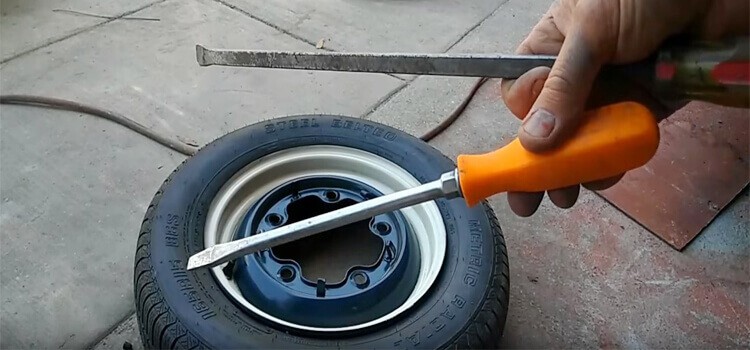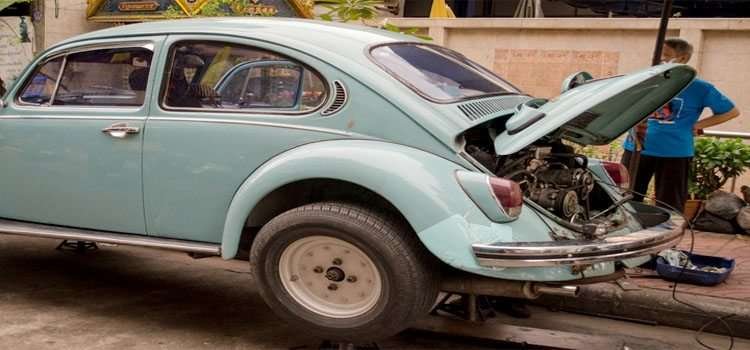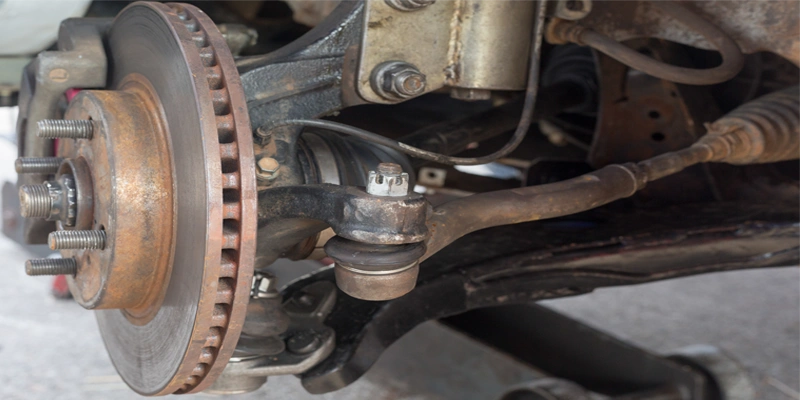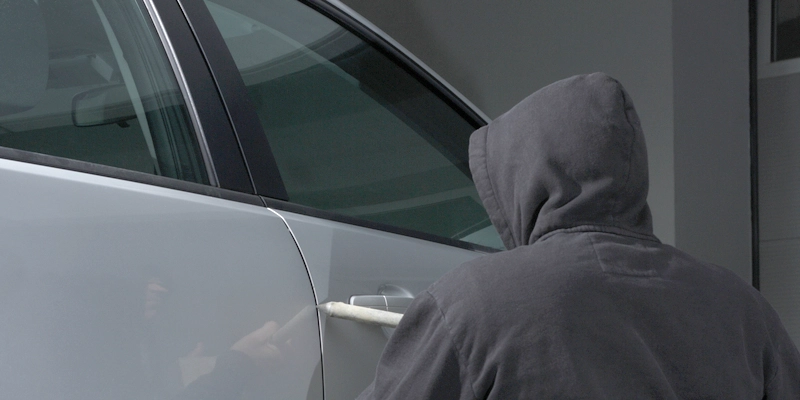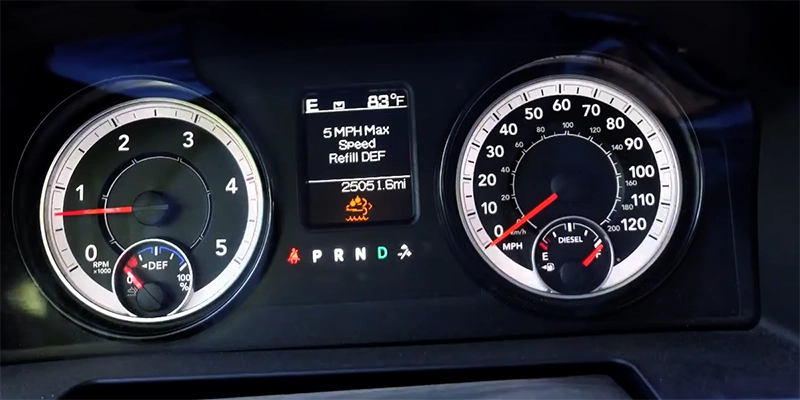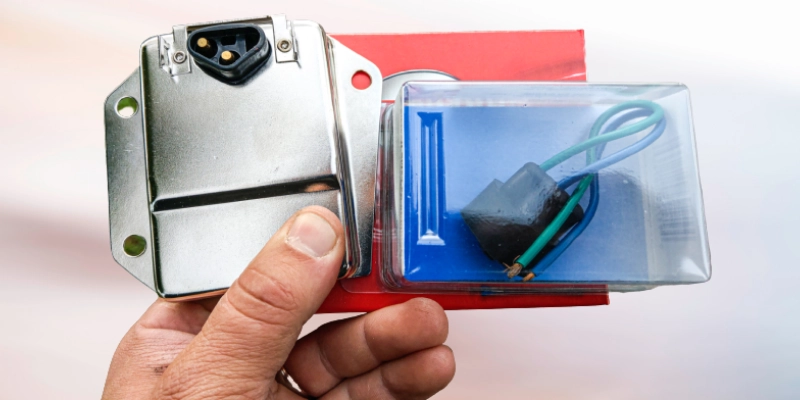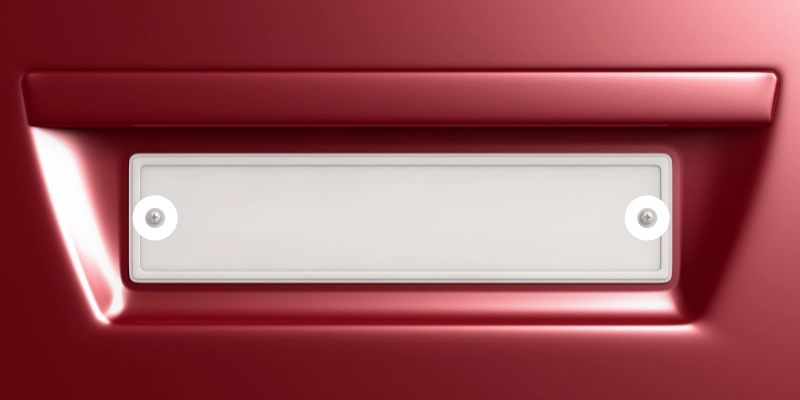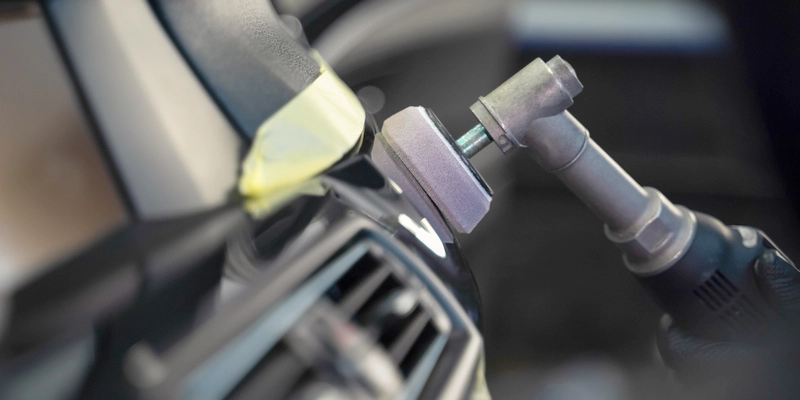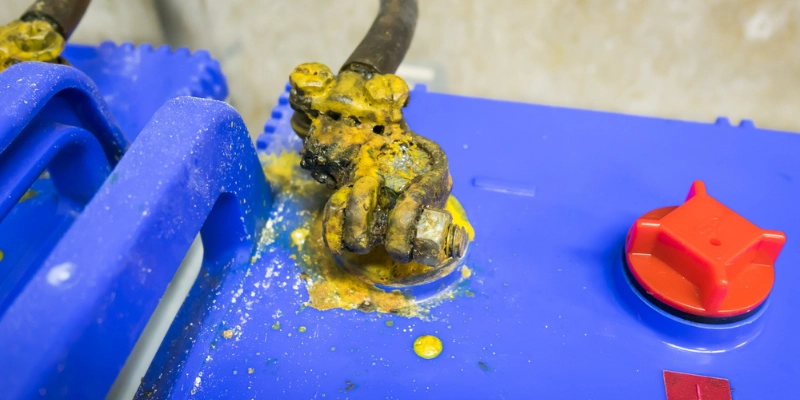Key takeaways
- A bad carrier bearing can cause serious issues in the vehicle, including vibrations and noises, bad fuel economy, and difficulty in shifting gears. It is important to address any symptoms as soon as they are noticed to prevent further damage to the vehicle.
- Driving with a bad carrier bearing can be risky and should be avoided if possible. Continuing to drive with a bad carrier bearing can lead to further damage to the driveshaft, transmission, and other parts of the vehicle, increasing repair costs.
- The lifespan of a carrier bearing can vary depending on factors such as usage, proper maintenance, and quality of the part. Regular maintenance can help extend the life of the carrier bearing and prevent potential issues.
The significance of driving with a bad carrier bearing is crucial to understand for every car owner. A bad carrier bearing can lead to severe damage and costly repairs, making it essential to identify and replace the faulty component promptly.
Ignoring the warning signs of a bad carrier bearing can result in various issues, including excessive vibrations, strange noises, and a reduction in the car’s performance.
Continuing to drive with a bad carrier bearing can cause additional damage to surrounding components, leading to even more significant problems and possibly a breakdown.
Replacing a carrier bearing is relatively straightforward and can be done at home by following specific instructions.
However, it is essential to have a reliable replacement part and the necessary tools before starting the process. It is also crucial to seek professional help if the replacement is beyond one’s comfort level.
Many car owners have experienced severe consequences while driving with a bad carrier bearing.
One car owner reported that ignoring the signs resulted in extensive damage to the driveshaft, leading to a hefty repair bill.
Therefore, it is critical to address the issue promptly to avoid significant expenses and inconvenience.
What is a Carrier Bearing?
As a driver, have you ever heard of a carrier bearing? If you haven’t, then it’s time to learn more about this essential car part!
Essentially, this component is crucial to a car’s drive shaft, and when not working correctly, it can significantly impact the performance of your vehicle.
Now, we’ll dive into the function of a carrier bearing and how it affects the overall performance of your car. Additionally, we’ll take a closer look at what types of vehicles tend to use this part.
So, buckle up and let’s explore what a carrier bearing is all about!
The function of a Carrier Bearing
A carrier bearing plays a crucial role in the functioning of a vehicle’s driveshaft. Operating as a component between two shafts, it ensures that torque gets transmitted between them smoothly.
The function of a carrier bearing is to prevent any lateral or horizontal movement of the driveshaft, thus providing stability and balance.
By keeping both halves of the driveshaft aligned properly, the carrier bearing maintains smooth power delivery from the transmission to the wheels.
In addition to maintaining alignment, the carrier bearing also absorbs shocks and vibrations generated by the spinning driveshaft.
Without it, these vibrations would result in excessive wear and tear on other parts of the drivetrain.
Moreover, the filter in your car has no proper guard against such intense movements; therefore if anything were to happen you may degrade its condition in just weeks.
Driving regularly without timely maintenance can lead to wear and tear of carrier bearings much faster than usual resulting in frequent replacement needs that may consume both time and money.
Furthermore, some symptoms like clunking noise or steering difficulties exert more pressure on bearings, which can eventually lead to breakdowns in different components leading you stranded in unexpected places.
While there are no fixed parameters for evaluating how long you can drive with a bad carrier bearing as many factors affect their longevity, it’s imperative to get them checked regularly during maintenance appointments.
Keeping up with regular maintenance reduces risks associated with damaged bearings so that you can avoid unexpected expenses mid-travel or getting into accidents caused by sudden breakage of bearings while driving at high speed on rough terrains.
An auto enthusiast Brian shares his experience with us regarding how he had to leave his car midway because one fine day during summer trips; he felt vibrations while driving beyond 20 mph resulting from failed bearings that he ignored due to his hectic work schedule and lack of attention towards regular vehicle check-ups.
Though severe vibration sounds will give away deteriorating mechanics initial failure at replacing & inspecting them periodically quickly leads to other breakdowns in different parts like fuel pumps and automatic transmission control modules.
Don’t worry, almost every vehicle with a driveshaft has a carrier bearing – your car isn’t special.
Vehicles with Carrier Bearings
Carrier bearings are an integral part of vehicles that come equipped with driveshafts. These bearings play a critical role in the functionality of the entire system and ensure smooth operation during driving.
The driveshaft consists of various components, including the universal joint, slip yoke, and splined shaft, but the carrier bearing is responsible for minimizing any vibrations or shocks that may come from uneven road surfaces.
Vehicles with carrier bearings are trucks, SUVs, cars, and other heavy-duty machinery. The carrier bearings help maintain proper alignment and support for the driveshaft as it rotates at high speeds.
They also prevent excessive wear and tear on other parts of the drivetrain.
When operating correctly, carrier bearings reduce noise levels produced by rotating parts and vibrations experienced in all vehicles.
The correct functioning of these bearings significantly boosts fuel economy while reducing component damage.
A source states that up to 30% of all trucking accidents result from mechanical failures like worn-out carrier bearings.
Without the carrier bearing, your driveshaft would go rogue and cause chaos in your vehicle.
How Does a Carrier Bearing Work?
The idea of having a bad carrier bearing can be daunting, it may raise questions about the longevity of your driveshaft and the safety of your vehicle.
Therefore, it’s essential to have a basic understanding of how a carrier bearing works to assess the situation accurately.
The driveshaft comprises several components that work together to deliver power from the engine to the wheels. In this section, we will unpack the anatomy of the driveshaft without getting too technical.
We will delve into the role of the carrier bearing and how it helps to absorb shocks and vibrations.
Parts of the Driveshaft
The vital components that make up the Driveshaft are responsible for transmitting power from the engine to the vehicle’s wheels.
Understanding and being knowledgeable about these parts of the driveshaft is essential for car owners and mechanics in ensuring that the vehicle runs smoothly.
Below is a table that identifies various parts of the driveshaft:
| Part | Description |
|---|---|
| Universal Joints (U-joints) | Enables flexing motion on the driveshaft |
| CV Joints | Allow smooth rotation at various angles |
| Center Support Bearing | Provides bearing support in between two connected shafts |
| Slip Yoke | Allows telescopic movement |
Each of these distinct elements plays a critical role in guaranteeing excellent performance from your vehicle while driving.
It is vital to note that experiencing any issues with any parts of the driveshaft can result in serious mechanical faults, such as vibrations, difficulties steering, clunking noises, and tire wear.
To minimize wear and tear on these components of the drivetrain over an extended period, it’s suggested to concentrate on regular maintenance efforts such as lubrication, cleaning debris, and replacing worn-out parts promptly. The carrier bearing: because your driveshaft needs a hug too.
Role of Carrier Bearing
The carrier bearing performs an essential role in the driveshaft of a vehicle.
It helps to maintain proper alignment and balance between the front and rear wheels, ensuring smoother power transmission from the engine to the rear axle.
Without this important component, the entire driveshaft system would be at risk of damage due to excessive vibrations and shocks.
Within the driveshaft system, the carrier bearing sits between two separate shafts that span from the transmission to the rear axle.
Its primary function is to support and stabilize these two halves, absorbing and distributing any shocks or oscillations that may occur during acceleration or deceleration.
This ensures that the entire system remains balanced and well-maintained, preventing any undue wear or damage to any components.
Aside from its stabilizing function, the carrier bearing also helps to reduce noise and vibration.
By acting as a buffer between different parts of the shaft assembly, it dampens sound waves and decreases overall resonance within the vehicle.
This can help create a more comfortable driving experience while reducing stress on both driver and machine.
Importantly, proper installation of a carrier bearing is crucial for its role in maintaining stability within your vehicle’s drivetrain system.
DIY replacement isn’t recommended unless you’re experienced with similar tasks in mechanics, otherwise, consider visiting your local shop for professional service if needed.
Don’t risk further damage – even minor degradation can lead to broken pieces flying off at high speeds endangering yourself or another driver on the road!
After all, who needs a therapist when you have a trusty carrier bearing to absorb all your shocks and vibrations?
Absorption of Shocks and Vibrations
The carrier bearing in a vehicle performs important functions, including the absorption of shocks and vibrations.
As the driveshaft rotates, it undergoes movements that result in vibrations and sudden shocks that might cause damage to other parts of the vehicle.
The carrier bearing absorbs these shocks, resulting in smooth rides for passengers.
The role of absorption of shocks and vibrations is critical because it cushions the impact of movements transmitted through the drivetrain system.
When there is excessive vibration or shock, the carrier bearing takes up these forces created by any play or imbalance between the transmission and rear differential assembly.
It reduces friction and allows free movement of rotating parts; hence, eliminates noise or vibration and prolongs component life.
It’s worth noting that neglecting regular maintenance such as lubrication or misalignment causes internal wear which could lead to more serious problems like premature failure.
Ensure you regularly service your vehicle to avoid severe damages resulting from a bad carrier bearing. Signs of potential failure include:
- bad fuel economy,
- strange noises from underneath your car when driving at high speeds (especially on highways),
- unusual shaking sounds while accelerating quickly onto highways,
- excessive wear on tires among others; be alert for any signs requiring immediate action.
Don’t overlook symptoms indicating potential issues with the carrier bearing; it could result in severe consequences such as seizing the drivetrain or losing power while driving at high speeds leading to accidents.
Thus an expert mechanic will promptly address the problem before it worsens.
A bad installation can make your carrier bearing go from bearing with it to bearing down on your wallet.
Reasons Why Carrier Bearings Fail
As a car enthusiast, I always strive to keep my vehicle in the best possible condition, especially when it comes to the drivetrain components.
One particular concern I’ve been hearing a lot lately is, “How long can I drive with a bad carrier bearing?” The carrier bearing is a crucial part of the drivetrain as it supports the weight of the driveshaft.
In this section, we’re going to discuss the reasons why carrier bearings fail, including wear and tear caused by high mileage, accidents and sudden damage, and the impact of improper installation on bearing performance.
Wear and Tear
As parts of the carrier bearing undergo wear and tear, they gradually lose flexibility and functionality. Over time, continuous use will weaken components that help to keep the driveshaft running smoothly.
Any dents or scratches on the surface of these components might hasten the wear and tear rate, permanently damaging the bearing surface.
The wear and tear of a carrier bearing depends on the frequency and conditions under which it is used. Heavy usage, poor maintenance or improper installation all contribute to increased wear and tear rates.
Extreme weather changes and riding over rough terrains could cause damage to various mechanisms depending on whether internal or external systems become exposed.
It is important to take note of this deterioration, as failure to attend can lead to serious problems with other drivetrain components like axles and bearings.
Regular maintenance should be a normal practice for every vehicle owner.
Inspection schedules should be set at general intervals – which may vary depending on brand specifications or usage trends – as neglecting problems like wear down or ‘wear and tear’ can cause significant risk factors.
To avoid hazards caused by prolonged driving with a damaged carrier bearing, several measures can be taken such as scheduling inspections regularly, prudent supervision before hitting roads & replacing worn-out parts based on recommendations from professionals who know how minor issues in one part could trigger system-wide problems down the line!
Unfortunately, accidents and sudden damage don’t spare carrier bearings either, but don’t worry, we’ll help you understand how to spot the signs.
Accidents and Sudden Damage
Vehicle accidents and sudden damage are some of the unforeseeable events that can cause damage to a carrier bearing.
In such circumstances, the bearing may become weak or completely damaged, reducing its lifespan and overall performance.
When an accident occurs, it’s essential to inspect the carrier bearing for any signs of damage before driving the vehicle further.
If there is any noticeable damage, immediate replacement must be done to avoid further complications resulting from a faulty carrier bearing.
Apart from accidents, sudden damage can occur due to unforeseeable incidents on the road.
These incidents may include running over sharp objects or hitting potholes that can dent or deform the driveshaft or the carrier bearing.
It’s crucial to note that driving with damaged carrier bearings is not only dangerous but also costly in terms of repairs and maintenance.
Ignoring this issue could lead to more severe problems and result in the complete replacement of the entire driveshaft assembly.
Regular maintenance checks should be carried out by a certified mechanic for vehicles with carrier bearings irrespective of whether an accident occurred or not.
Proper maintenance prevents wear and tear and reduces the risks associated with accidents and sudden damage events.
Ensure that you take your vehicle for regular inspections regardless of mileage limits to avoid unnecessary risks associated with driving with a bad carrier bearing that could potentially result in an accident.
A carrier bearing installed like a toddler’s building blocks can lead to a car sound that resembles a rock concert.
Improper Installation
The incorrect placement of carrier bearings during installation can lead to complications. If inadequate attention is paid during installation, this will result in the premature failure of carrier bearings.
Improper installation can cause misalignment or bearing overloading, leading to damage and component wear.
Carrier bearings require careful installation, with torque specifications carefully followed.
The bearing should be positioned correctly, as slight misalignment can cause load imbalance and unnecessary stress and strain on parts.
These additional strain levels may cause the component to heat up quickly, reducing the bearing’s service life.
Moreover, installing a wrong or incompatible part may cause a carrier bearing to fail prematurely. It is essential to ensure that the correct size and type of carrier bearing are used before installing them. Incorrect use of grease/oil or improper fitting techniques may further aggravate this situation.
Proper torque specs must be maintained during installation as overtightened or under-tightened bolts can loosen over time causing instability and vibration in the drive shaft.
Therefore it is imperative that professional experts carry out proper testing protocols for accurate installation processes using quality tools for error-free results to avoid premature failures caused by improper installations.
Driving with a bad carrier bearing is like being on a shaky rollercoaster that never ends.
Symptoms of a Bad Carrier Bearing
As a car owner, it’s important to pay close attention to any unusual noises or changes in your vehicle’s performance. One component that can begin to deteriorate over time is the carrier bearing, which supports the driveshaft as it rotates.
In this section, we’ll explore the symptoms of a bad carrier bearing in-depth.
From strange vehicle noises, vibrations, and fluid leakage to clunking sounds, we’ll cover all the warning signs you need to know to take action and prevent further damage to your vehicle.
Vehicle Noises
Unusual Sounds from the Vehicle: When driving, you may notice strange, whining, or grinding noises coming from your car.
These unexpected sounds are often a sign of a problem with your vehicle’s carrier bearing.
The carrier bearing could be worn out or damaged due to wear and tear, improper installation, or accidents that caused sudden damage.
The noises usually occur when you are accelerating or turning corners while driving. They may also increase in volume and intensity as you drive faster.
If you notice any irregular vehicle noises from your car, it is important to have it checked by a qualified mechanic immediately.
Ignoring early warning signs could lead to bigger problems in the future, including expensive repairs and safety hazards for yourself and others on the road.
Regular maintenance checks on your vehicle can help prevent serious problems from developing with the carrier bearing or other components.
By taking care of small issues early on, you can avoid costly repairs down the line and ensure the safety of your passengers while driving.
Vibrations? More like a free massage while driving with a bad carrier bearing.
Vibrations
Experiencing constant jarring and shaking while driving is a sign of an underlying automotive issue. When it comes to carrier bearing, vibrations are one of its common symptoms.
Carrier bearings maintain driveshaft stability by absorbing shocks and vibrations, ensuring a smooth ride for passengers.
The intensity and frequency of the vibrations usually depend on the condition and positioning of the carrier bearing along with other factors ranging from driving speed to terrain variations.
The more worn-out or damaged the carrier bearing is, the more pronounced the vibrations will be.
Drivers who suspect their carrier bearings are causing excess vibration should have them inspected by a qualified mechanic as soon as possible.
It’s important to note that vibration can also stem from other vehicle parts such as tires, brakes, or suspension systems, so a thorough diagnosis is always recommended in such cases.
According to yourmechanic; Driving with a bad carrier bearing is like trying to go on a first date with a bad case of gas – it’s gonna ruin the whole experience.
Bad Fuel Economy
Experiencing Fuel Inefficiency in Vehicles
- One of the symptoms of a bad carrier bearing is decreased fuel efficiency.
- A worn or damaged carrier bearing can cause the driveshaft to become misaligned, leading to increased friction and a reduction in fuel economy.
- As the carrier bearing fails, it can also cause additional strain on other parts of the drivetrain, further decreasing fuel efficiency.
- If you notice a decrease in fuel mileage or other symptoms of a bad carrier bearing, it is important to have your vehicle inspected by a qualified mechanic as soon as possible.
Additionally, poor fuel economy could be an indicator of various other underlying problems within the vehicle’s engine and transmission system. Regular maintenance and inspections are required to prevent significant damage and costly repairs.
According to motorist.sg; driving with a bad carrier bearing may cause severe damage to the driveshaft and ultimately lead to complete failure.
Looks like your car is trying to communicate in Morse code with that blinking engine light.
Engine Light
When the engine light illuminates your dashboard, it is a warning sign that something is wrong with your vehicle.
This could be caused by a malfunction of the carrier bearing, a critical component that holds up the driveshaft in many vehicles.
A faulty carrier bearing can cause vibrations and movement in the driveshaft, which can damage components causing the engine light to switch on.
This issue should not be ignored as it can lead to bigger problems with your vehicle.
It is important to note that other issues may also result in an engine light, making proper diagnosis crucial.
Regular maintenance of your vehicle such as checking for fluid leaks or tire wear can detect early signs of problems with your carrier bearing, helping you avoid costly repairs and replacements down the line.
I was driving my car and noticed that my engine light had come on. I took it to a mechanic who found out that my carrier bearing was worn out and needed replacing.
If I had not taken care of this issue promptly, it could have led to more expensive repairs and could have put myself and others on the road in danger.
A bad carrier bearing is like a leaky faucet, except it’s your car’s fluid that’s slowly dripping away.
Fluid Leakage
The presence of fluid leakage from the drivetrain is a common sign of a bad carrier bearing.
The drive shaft connects the engine and the rear axle, and it is sealed by various seals to keep the lubricating fluids in place.
When the carrier bearing fails, vibration and excessive load can cause wear on these seals, leading to fluid leaks.
Not only does this impact the longevity of essential drivetrain components like U-joints and transmission gears, but the leakage can also contaminate other vital car parts like brakes, which puts additional stress on maintaining control over your vehicle.
It is important to mention that different vehicles have varying types of fluids circulating through them.
Depending on where exactly you see a fluid leak (front or rear), it could be indicative of anything from grease on universal joints to differential oil seeping out.
Pro Tip: If a fluid leak occurs anywhere in your vehicle, you should take immediate action and consult with an experienced mechanic or technician proficient in drivetrains.
Feeling like you’re in a perpetual state of manual transmission? It could be a bad carrier bearing causing those gear-shifting issues.
Problem Shifting Gears
The transmission system in vehicles facilitates the gear-shifting process dependent on speed and torque requirements.
However, sometimes issues may arise with this mechanical function leading to ‘gear shifting problems.’ Here is a guide to address these problems:
- Start by identifying the symptoms associated with problem shifting gears. These include difficulty in shifting gears, vehicle jerking when changing gears, burning smell from clutch and clutch pedal feeling heavier than normal.
- The next step involves diagnosing the issue. It is best to consult a specialist who may test drive for further diagnoses such as slipping thrust bearings or excessive slack due to wear and tear, or a failing clutch.
- Finally, fix your problem by shifting gears. This may involve replacing damaged components while periodically maintaining the vehicle’s transmission system.
Transmission systems are made up of moving parts that are prone to friction and stress; hence it’s essential to take care of them appropriately.
Regular maintenance check-ups can help detect any arising issues early enough before they escalate into full-blown problems.
For instance, Sarah owned a 2004 Toyota Corolla she’d recently bought second-hand.
After a few days of driving it around town, she noticed erratic revs when trying to shift gears forward or back, eventually resulting in difficulty controlling her car.
Upon inspection at her local auto shop, the mechanic advised that her Corolla had an issue with its clutch system caused by previous owners’ neglect of regular maintenance checks.
If your car sounds like a broken percussion instrument, it might be time to check your carrier bearing.
Clunking Noises
Unusual Noise Emitted by Troubled Carrier Bearings
Clunking noises are one of the prominent symptoms of a failing carrier bearing. These noises sound like metallic thuds or knocks that occur when the vehicle is transitioning between gears. The sounds may also come from brake-related issues, such as worn-out brake pads or discs. However, if brake pads and discs aren’t the culprits behind the clunking noise, you should have your carrier bearing inspected.
The knocking and banging can eventually cause further damage to other components of the driveshaft system, including transmission output seals, universal joints, and differential gears. Neglecting this issue will also affect fuel efficiency since it adds stress on the engine, causing it to consume more fuel.
Pro Tip: Always take unusual noises seriously and have them checked out by professional mechanics to avoid costly repairs down the road. Your tires will wear faster than Kim Kardashian’s husbands with a bad carrier bearing.
Tire Wear
The wear and tear of the tires is a common issue experienced by drivers, and this can be caused by various factors. The friction produced as the vehicle moves often leads to ‘tire degradation,’ where the tread wears out over time.
Additionally, a bad carrier bearing can lead to uneven loading of the driveshaft, causing an imbalance in the wheel alignment. This not only contributes excessively to tire wear but also increases rolling resistance, which reduces fuel economy.
It is crucial to note that tire wearing varies from driver to driver, depending on driving habits and road surface conditions. Therefore, it is recommended that you have your car checked regularly for any worn-out suspensions components such as shock absorbers or ball joints.
To avoid excessive tire wear due to a faulty carrier bearing, it’s essential to perform regular checks on your vehicle’s suspension system. Aligning wheels properly results in even distribution of weight on all four tires; this reduces uneven wear and tear of your vehicle giving you extended life for your tires.
Steering a car with a bad carrier bearing is like trying to steer a love triangle – it’s messy, unstable, and guaranteed to end in tears.
Steering Difficulty
The steering system in vehicles is an essential component that helps drivers steer and control their car’s movement. When a vehicle experiences ‘steering difficulty,’ it means there are issues slowness in response, stiffness, or problems with turning the wheels when driving.
When the carrier bearing fails, it can cause steering difficulty in cars as the driveshaft holds this bearing firmly in position and transmits power between different components of the vehicle. When the carrier bearing fails, it can result in the driveshaft taking on more play leading to unusual movements that travel through suspension components that can cause stiffness when operating a car.
If you’re experiencing steering difficulty in your vehicle, regular maintenance’s importance cannot be overstated as poorly maintained bearings could affect other areas of the car causing extensive damage. Regular inspection of drivetrain components coupled with timely replacement of worn-out bearings would prevent further damage and improve your driving experience.
To prevent steering difficulty caused by a bad carrier bearing, one option could be replacing bearings as soon as you detect any sign of wear like unusual noise or vibration resulting from stress placed on driveshafts but consulting certified mechanics for diagnosis and recommendations is always safer. Ensuring proper installation of replacement bearings and periodical checks on tire pressure can contribute to early detection of faults fixing which then prevents worn-out valves or suspension problems resulting from vibrations from further damaging your vehicle – contributing excessively to higher repair costs.
A burning smell from your vehicle could mean it’s time to replace your carrier bearing before it fully gives up the ghost.
Burning Smells
Foul Odors Emanating from the Vehicle
If you are experiencing the smell of burning rubber or plastic, it may be due to a malfunctioning carrier bearing. This odor is caused by the melting of the rubber bushings that surround the bearing.
It usually occurs when the driveshaft becomes unbalanced and puts excessive pressure on one side of the carrier bearing, causing it to shift in its holder and rub against metal components like brackets and heat shields.
Moreover, if left unattended, this can lead to disastrous consequences such as fire outbreaks inside the vehicle’s engine compartment.
To avoid this, you should always be vigilant about any foul odors emanating from your vehicle. If you smell burning rubber or plastic, you should get your car checked immediately by a professional mechanic who can diagnose and repair any underlying issues.
Additionally, regular maintenance checks can help you detect problems before they become too serious, thus preventing damage to your car’s mechanical system.
You can keep driving with a bad carrier bearing, but only if you’re eager to sing some off-key, vehicular karaoke.
How Long Can You Drive with a Bad Carrier Bearing?
As a car owner, it’s important to know when it’s time to replace your vehicle’s carrier bearing. But have you ever wondered how long you can drive with a bad carrier bearing before it becomes unsafe?
In this segment, we’ll explore the risks associated with driving with a damaged carrier bearing and the factors that can impact the life of this vital component.
Additionally, we’ll discuss the importance of regular maintenance to help extend the lifespan of your carrier bearing and keep you safe on the road.
According to CarBibles and other auto experts, ignoring this crucial component can have severe consequences and lead to expensive repairs.
Risks of Driving with a Bad Carrier Bearing
Driving with a faulty carrier bearing can pose several risks. It can cause further damage to the driveshaft and transmission system, leading to costly repairs.
Moreover, it can impact the steering and handling of the vehicle, putting the driver and passengers in danger.
Continuing to drive with a bad carrier bearing can also increase the likelihood of sudden failures and breakdowns on the road.
If not addressed promptly, it can result in accidents or lead to loss of control while driving. The vibrations and noise caused by a failing carrier bearing can be distracting for drivers, causing them to lose focus on the road.
Regular maintenance is crucial in preventing such situations from arising. In case a bad carrier bearing is identified, it must be fixed or replaced at the earliest possible time. Neglecting such issues can have severe implications down the line.
Pro tip: If any symptoms related to carrier bearings are observed, it is best to take professional help immediately instead of carrying out DIY investigations as this may cause more harm than good.
A carrier bearing’s lifespan can be cut short by harsh driving, neglecting maintenance, and the occasional cursed voodoo ritual.
Factors Affecting the Life of a Carrier Bearing
Factors that can impact the life of a carrier bearing include various elements that affect its performance and longevity. These range from regular maintenance schedules to driving conditions and installation quality.
| Part | Description |
|---|---|
| Universal Joints (U-joints) | Enables flexing motion on the driveshaft |
| CV Joints | Allow smooth rotation at various angles |
| Center Support Bearing | Provides bearing support in between two connected shafts |
| Slip Yoke | Allows telescopic movement |
Driving conditions such as challenging terrain, heavy loads, or frequent stop-and-go traffic can affect the wear and tear on the bearings over time.
Regular maintenance checks that include lubrication levels, visual inspection for any damage or wear and tear, and replacements according to manufacturer specifications are also essential to keep bearings operating smoothly.
Proper installation is imperative as it ensures the parts are working together optimally, minimizing stress on individual components.
Unique details can vary for each vehicle’s make and model. Some carrier bearings may have specific instructions regarding usage in harsh weather conditions, extreme temperatures, or off-road purposes.
One instance where factors affecting the life of a carrier bearing played a role was in a fleet management program involving United Parcel Service (UPS).
Their vehicles required regular inspections to ensure timely repairs or replacements could take place to minimize downtime interruptions while delivering packages around the world.
Skipping maintenance is like playing Russian roulette with your Carrier Bearing’s lifespan.
Importance of Regular Maintenance
Regular maintenance is crucial when it comes to ensuring the longevity of a carrier bearing. Neglecting maintenance can lead to expensive repairs or even replacement.
It is essential to address small problems before they escalate into major issues, as regular maintenance can prevent serious damage in the long run.
Performing regular check-ups can help maintain optimal operation of a carrier bearing. Keep an eye out for signs of wear and tear, leakage, bad fuel economy and vibrations whilst driving.
By staying on top of these small issues, vehicle owners can extend the life span of their carrier bearings.
It is important not to ignore the maintenance schedule recommended by manufacturers, as failure to do so may result in serious damage caused by accidents or sudden damage which could have been prevented with regular check-ups.
Pro Tip:
Don’t wait until you hear strange sounds or experience vibrations before going for check-ups; instead, incorporate regular visits with professionals who specialize in servicing and repairs to avoid unexpected breakdowns whilst driving.
Final thoughts
After driving with a bad carrier bearing, it is best to replace it as soon as possible.
Continuing to drive with a bad carrier bearing can cause further damage to other components and lead to more costly repairs in the future. If left unaddressed, it may also lead to the breakdown of other parts.
It is important to get the issue resolved by a professional mechanic to prevent more extensive damage.
Replacing the carrier bearing requires specialized knowledge and tools, and it is crucial to use high-quality replacement parts that match the specifications of the vehicle.
Neglecting to fix the issue may cause additional problems, including issues with the driveshaft and differential.
It is important to address issues with the carrier bearing promptly to avoid further damage and ensure the safety of the vehicle and its occupants.
Waiting to replace a bad carrier bearing can be risky and potentially dangerous.
According to a source from YourMechanic, a damaged carrier bearing can cause “excessive noise when the vehicle is in motion, and also can cause drivetrain vibration and damage.”
It is important to have any issues with the carrier bearing inspected and resolved as soon as they become noticeable.
Some Facts About How Long Can You Drive With a Bad Carrier Bearing
- It is not recommended to drive with a bad carrier bearing for an extended period of time. (Source: YourMechanic)
- Continuing to drive with a bad carrier bearing can cause further damage to the driveshaft and transmission system. (Source: It Still Runs)
- In some cases, you may be able to drive short distances with a bad carrier bearing, but it is not advised. (Source: Car From Japan)
- The exact amount of time you can drive with a bad carrier bearing varies depending on the severity of the damage and the type of vehicle. (Source: Axle Addict)
- It is important to get a bad carrier bearing replaced as soon as possible to avoid further damage and costly repairs. (Source: Car Bibles)

